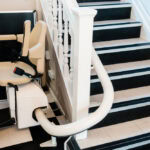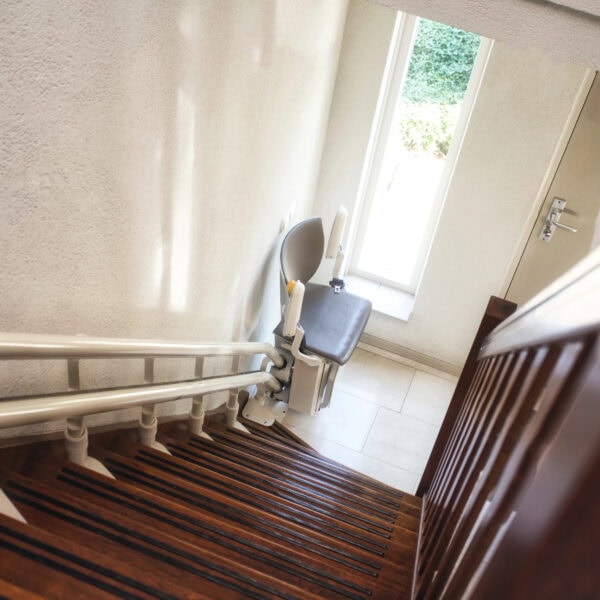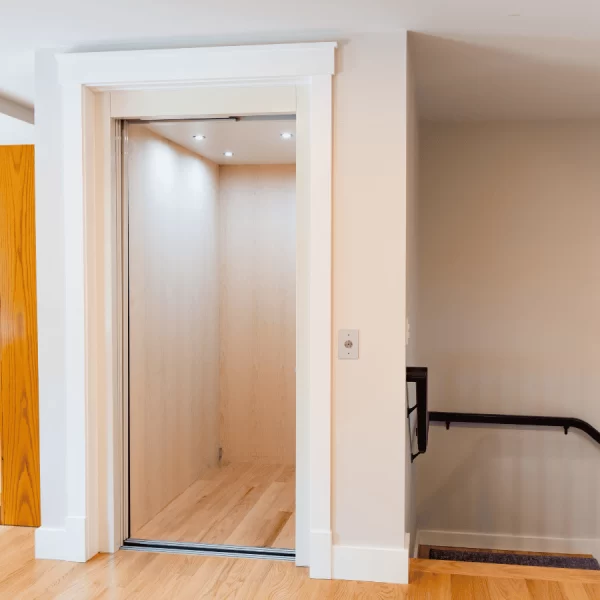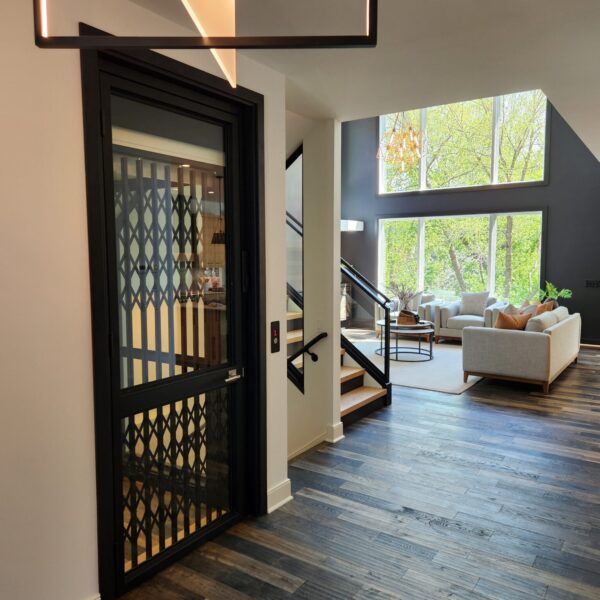
Quick and Easy: Using a Stair Lift for Enhanced Mobility and Safety
March 24, 2025Stair navigation can be a challenge, especially for those with mobility issues. Choosing the right stair elevator can enhance your home’s accessibility while ensuring safety and comfort. In this guide, you’ll learn how to evaluate your staircase’s design, select the appropriate style and features, and consider installation options. With these expert tips, you can make an informed decision that best suits your needs and improves your quality of life.
Key Takeaways:
- Assess the dimensions and configuration of your staircase to determine the appropriate model and style of stair elevator for your needs.
- Consider the weight capacity and features of the stair elevator, such as the power source, speed, and safety options, to ensure it meets the user’s requirements.
- Consult with professionals and read reviews to compare different brands and models, ensuring you make an informed decision based on quality and reliability.
Understanding Stair Elevators
A stair elevator, often referred to as a stair lift or chair lift, is a mechanical device designed to assist individuals in safely moving up and down stairs. These devices improve accessibility in homes or commercial spaces, making it possible for people with mobility challenges to navigate stairs without the risk of falling.
Types of Stair Elevators
While selecting the right stair elevator for your needs, consider the following types:
| Straight Stair Lifts | Designed for straight stairs; easiest to install. |
| Curved Stair Lifts | Custom-made for curved and spiral staircases. |
| Outdoor Stair Lifts | Weather-resistant designs for outdoor staircases. |
| Platform Lifts | Ideal for wheelchair users, providing a flat surface. |
| Standing Lifts | For those who can stand while traveling between floors. |
After understanding the various types, you can choose the stair elevator that best suits your staircase and personal requirements.
Benefits of Using a Stair Elevator
With a stair elevator, you greatly enhance your mobility and independence within your living space. These elevators prevent falls and accidents and allow you to access all areas of your home without needing assistance.
Understanding the advantages of investing in a stair elevator is necessary for your safety and convenience. With improved mobility, you can effortlessly traverse your home, minimizing the risk of injuries associated with moving up and down stairs. Moreover, stair elevators can be a valuable tool for enhancing the overall quality of life, promoting independence, and reducing reliance on caregivers. They also boost the value of your home by making it more accessible for everyone. Ultimately, these elevators are not just a luxury but a necessary enhancement for your daily living.
Key Factors to Consider
Assuming you are in the market for a stair elevator, several key factors will help guide your decision. Consider the following:
- Staircase configuration
- Weight capacity and size
- Power source
- Aesthetic compatibility
- Safety features
This will ensure you select a stair elevator that meets all your needs and enhances your home’s functionality.
Staircase Configuration
Staircase configuration plays a significant role in determining the type of stair elevator suitable for your home. You need to assess whether your staircase is straight, curved, or has landings, as these factors dictate the design and installation requirements of the elevator.
Weight Capacity and Size
A vital aspect of choosing a stair elevator is understanding its weight capacity and size. Each model has specific weight capacity limits that it can support, which impact usability and safety. You must consider the heaviest individual who will use the elevator, ensuring the model you select can comfortably accommodate that weight.
A stair elevator’s weight capacity is vital for performance and safety, and selecting a model that can handle weights significantly higher than average ensures reliability for all users. Additionally, the size of the stair elevator should fit your staircase dimensions without feeling cramped. An incorrectly sized unit can pose operational risks, while the right size allows for a smooth, safe ride. Your comfort and safety depend on these details, so consider them.
How to Assess Your Needs
To select the perfect stair elevator for your staircase, it’s crucial to evaluate your specific needs. Consider factors such as the layout of your staircase, the physical limitations of the user, and the available space for installation. Understanding your requirements will allow you to determine which type of stair elevator best fits your lifestyle and home. Taking the time to assess your needs ensures a seamless transition and improves accessibility for all users.
Personal Mobility Requirements
An evaluation of personal mobility requirements is crucial when selecting a stair elevator. Consider any medical conditions, disabilities, or age-related challenges affecting mobility. Understanding these factors will help you choose an elevator that accommodates the user’s unique needs and ensures comfort and safety while using the device.
Frequency of Use
Assessing how often the stair elevator will be used is essential for determining your required type and features. Knowing the expected frequency helps guide your selection, ensuring you choose a durable and efficient model for your usage patterns.
This evaluation of the frequency of use not only impacts the durability and design of the stair elevator but also influences feature requirements. For daily use, consider an elevator with smooth operation and quick accessibility. If it is used sporadically, a simpler model might suffice. Ensuring the stair elevator meets your frequency needs will enhance the user experience and provide reliable service.
Tips for Selecting the Right Model
After determining your needs, it’s crucial to consider various factors when selecting the right model. Evaluate these key aspects:
- Weight Capacity – Ensure the elevator meets your household needs.
- Power Source – Choose between battery-operated or electric options.
- Design Compatibility – Ensure it fits well with your staircase aesthetics.
- Safety Features – Look for secure belts, emergency stops, and other safeguards.
This will help you find a model that suits your home and lifestyle.
Researching Features and Options
Selecting the right stair elevator involves thorough research into available features and options. Look for models that offer:
- Customization – Various seat designs and colors.
- Adjustable Speed – Control the speed of operation for comfort.
- Remote Control – Convenient operation from a distance.
Evaluate how these features align with your requirements and preferences.
Comparing Brands and Reviews
Even with many options available, comparing brands and user reviews is vital to making an informed decision. Here’s a breakdown of what to look for:
| Brand | Key Highlights |
|---|---|
| Brand A | Highly rated for safety and customer support. |
| Brand B | Affordable, but reported durability issues. |
| Brand C | Premium features but at a higher price point. |
Focusing on performance, installation, and customer service feedback can highlight crucial factors in your choice.
Reviews play a crucial role in assessing various stair elevators. Pay particular attention to aspects such as user satisfaction, safety incidents, and maintenance requirements. Positive reviews often indicate reliable functionality and user-friendly operation, while negative reviews might warn about potential issues or risks. By analyzing the customer experiences, you can identify which brands consistently deliver regarding safety and performance, guiding your final decision.
Installation Considerations
Unlike some home improvements, installing a stair elevator requires careful planning and consideration of several factors, including your staircase’s design, width, and structural integrity. Assess the space to determine the best model for your needs, and seek professional help if you are unsure about installation steps. Ensuring a proper fit and safe operation is imperative for optimal use.
Professional vs. DIY Installation
While you may be tempted to save costs by attempting a DIY installation, hiring a professional ensures that your stair elevator adheres to safety standards. Professionals have the necessary expertise and tools to handle technical aspects, reducing the chance of errors that could jeopardize your safety and elevator performance.
Space and Aesthetic Integration
An effective stair elevator serves a functional purpose and must blend seamlessly with your home’s interior design. To achieve this, choose an elevator with a streamlined design that complements your staircase. Consider the material and color options that match your décor while ensuring the installation does not crowd or obstruct your stairway.
Installing your stair elevator should account for both functionality and aesthetic appeal. This means evaluating how the elevator will fit within your available space and choosing a design that enhances rather than detracts from your home’s décor. An elegantly designed elevator can serve as a statement piece, while the installation must ensure that it does not interfere with safe access to your stairs. Prioritize clear pathways and ensure the equipment operates smoothly without clutter or obstruction to maintain safety and style.
Maintenance and Support
Despite the initial investment in a stair elevator, long-term reliability is equally important. Staying on top of maintenance and utilizing available support will ensure your stair elevator operates efficiently and safely over time. Always check for the service options your manufacturer offers to keep your system in top condition.
Regular Maintenance Tips
Maintenance is imperative to prolong the lifespan of your stair elevator. Incorporate these simple practices into your routine:
- Regularly inspect the rails for debris
- Lubricate moving parts to minimize wear
- Ensure the batteries are charged and functioning
- Test the emergency features frequently
The key to ensuring longevity and serviceability lies in consistent upkeep.
Warranty and Customer Support Options
Various warranty and customer support options can give you peace of mind in your purchase. Many manufacturers provide limited warranties covering parts and labor. Take note of any extended warranty possibilities for added security. Additionally, look into the customer support services offered, as robust assistance can be vital in times of need.
Plus, having access to responsive customer support, including trained technicians and helplines, ensures that if any issues arise, you can tackle them swiftly. Please verify the availability of local service agents and their response times. This will help safeguard your investment and enhance your overall experience with your stair elevator.
Summing up
Drawing together the insights shared, selecting the perfect stair elevator for your staircase involves assessing your specific needs, understanding the layout of your home, and prioritizing safety features. Take the time to research different models, consider your budget, and consult with professionals if necessary. By focusing on these key elements, you can make an informed decision that enhances your mobility and overall comfort in your living space.
Q: What factors should I consider when measuring my staircase for a stair elevator?
A: When measuring your staircase, it is essential to consider several factors to ensure the stair elevator fits well. First, measure the total height from the base to the top of the staircase to determine the vertical distance the elevator needs to cover. Next, measure the width of the stairs to ensure that the elevator has enough clearance. Additionally, check for any landings, turns, or curves in the staircase, as these can affect the installation. Ensure to note any obstructions or architectural features that might impinge on space, such as railings or walls. It is advisable to consult with a professional installer who can help with precise measurements and provide advice tailored to your staircase design.
Q: What are the different types of stair elevators available, and how do I choose the right one for my needs?
A: There are primarily two types of stair elevators: straight stair lifts and curved stair lifts. Straight stair lifts are designed for staircases that go straight up and down, while curved stair lifts are customized to navigate turns and curves in the staircase. To choose the right one, consider the layout of your staircase, the weight capacity needed, and any specific features you may require, such as a folding seat or remote control operation. The power source options available, such as battery-operated or hardwired systems, should be evaluated. It may also be helpful to explore models that offer safety features like seat belts or obstruction sensors to enhance user safety.
Q: How can I ensure the stair elevator is safe and easy to use for my family members?
A: To ensure the safety and usability of the stair elevator, it is crucial to prioritize several key features. Look for elevators with safety sensors that can detect obstacles and stop operation if necessary. A sturdy and secure seat with safety belts can further enhance safety during operation. Additionally, choose elevators with easy-to-use controls, preferably placed within reach for all potential users. Features like a swivel seat for easy entry and exit, smooth operation controls, and a quiet motor can make the stair elevator more user-friendly. Don’t forget to check for certifications and reviews to ensure that your chosen elevator meets high safety standards and has a strong reputation for reliability.

Introducing Jeff Cates, the visionary Founder and Owner of CAPS Remodeling. After experiencing a profound personal event involving his son in 2007, Jeff was inspired to serve a higher purpose: to create safer, more comfortable, and independent living conditions for the elderly and disabled by modifying their current homes. Jeff’s deep-seated religious beliefs form the moral compass that steers CAPS daily operations. Apart from his unwavering dedication to his work, Jeff finds joy in boating and cherishing moments with his family.




